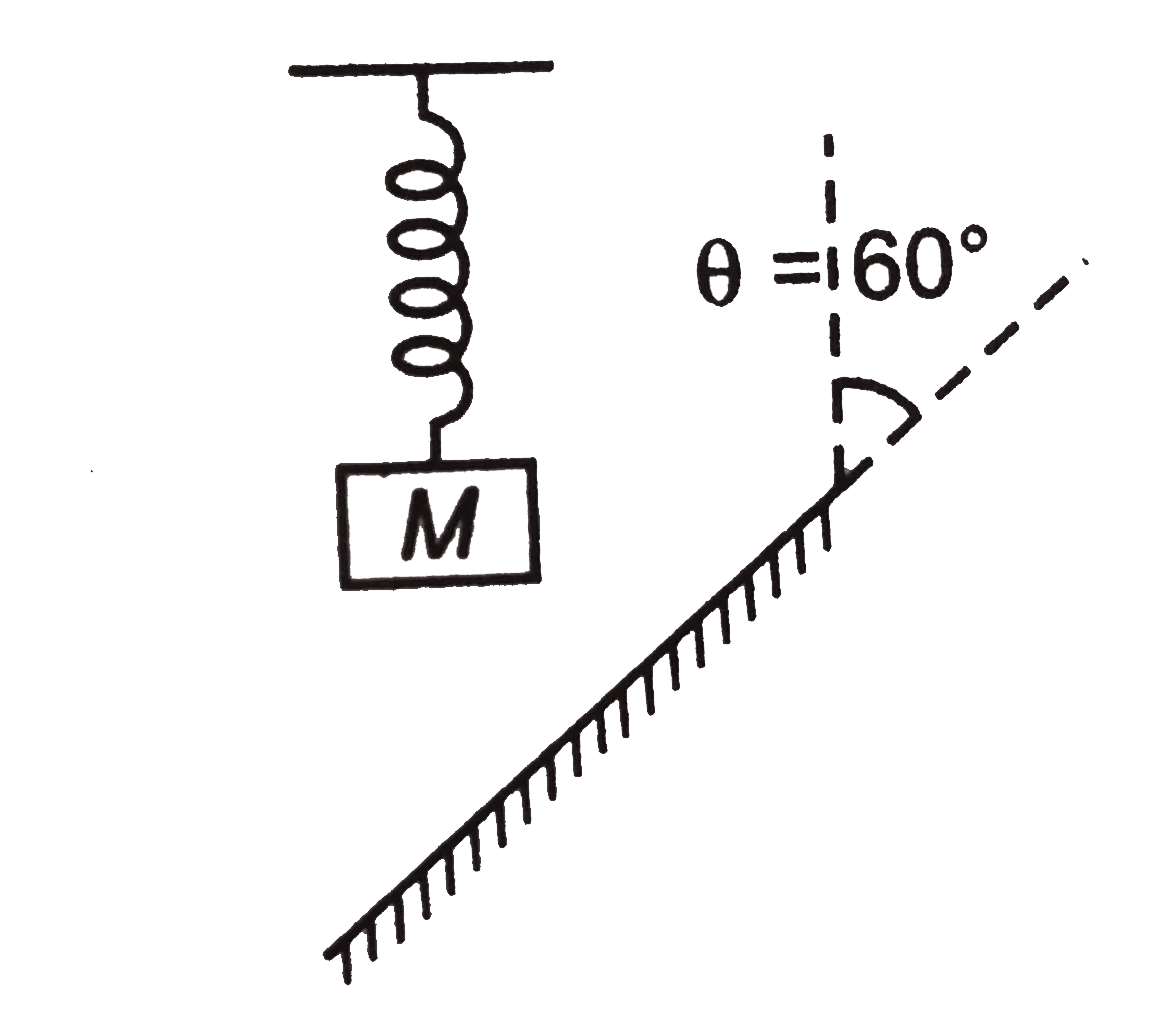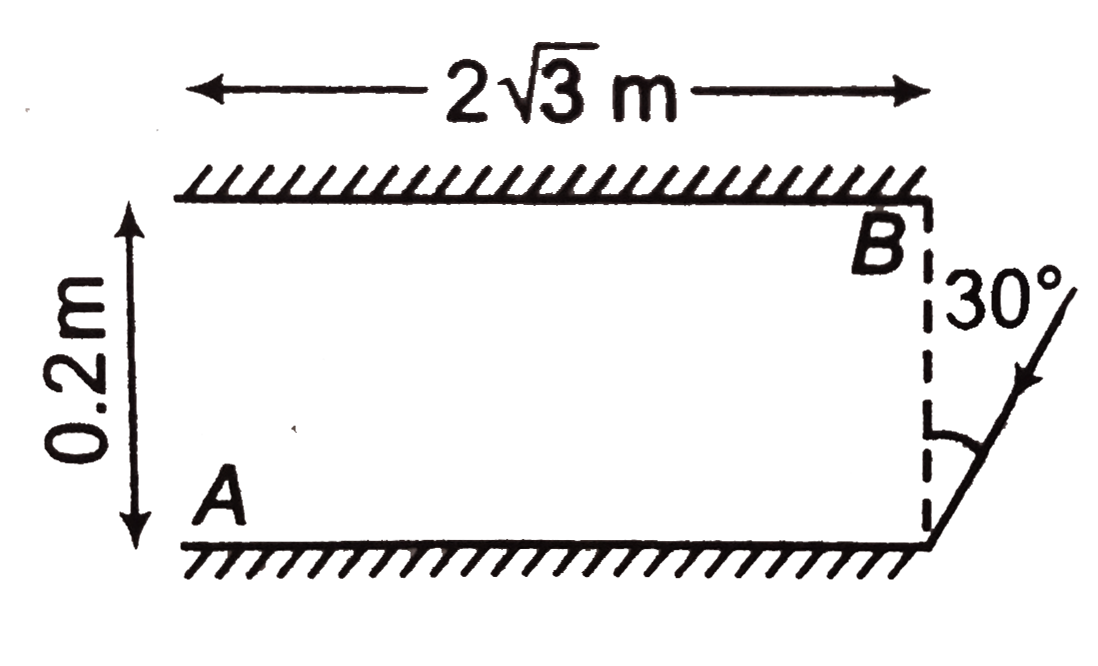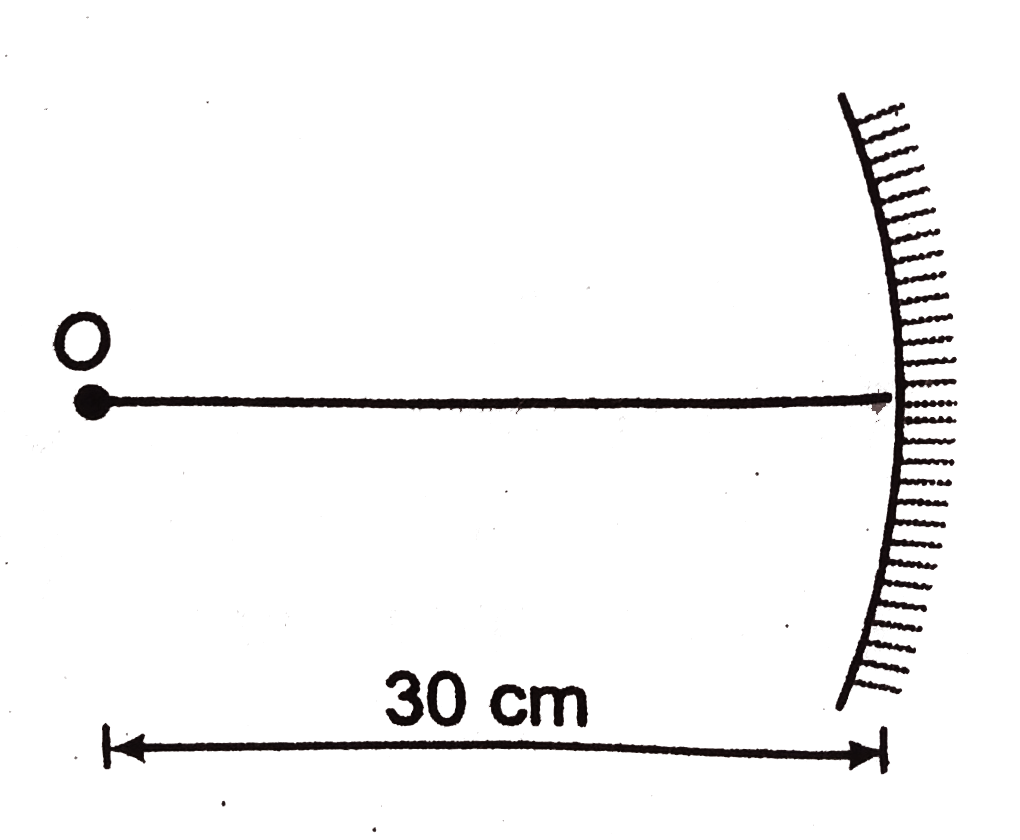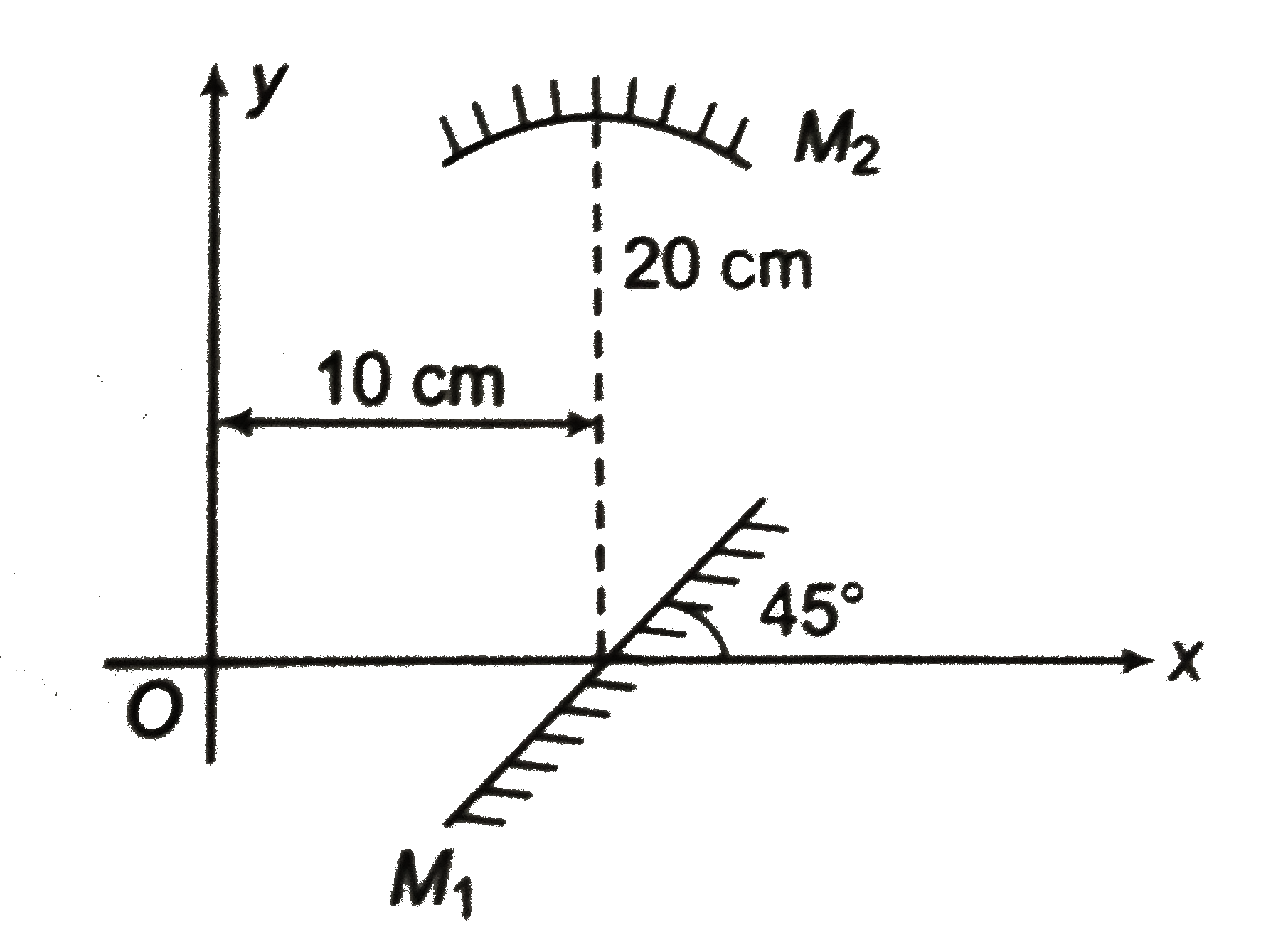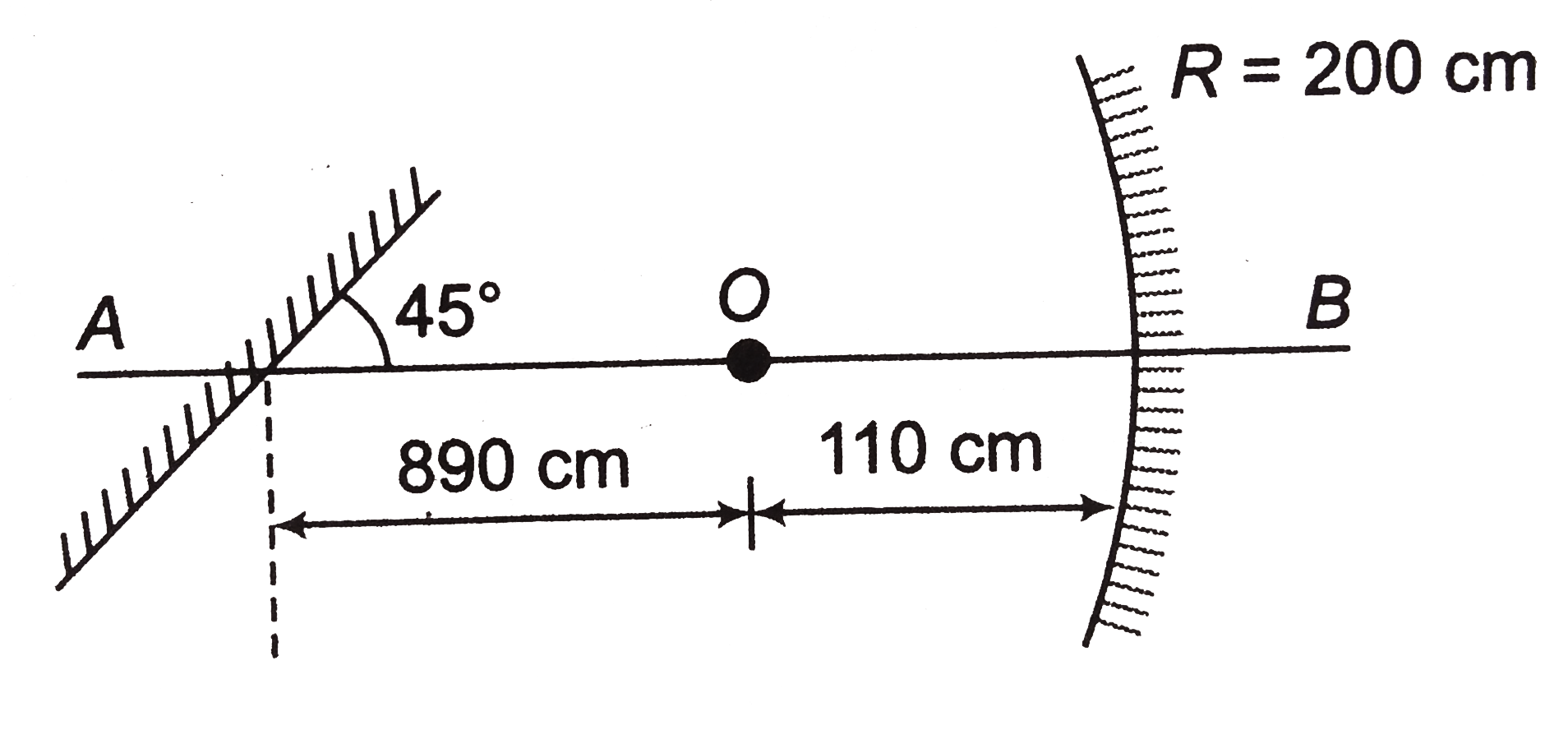Exercise Level 1 Subjective from DC PANDEY ENGLISH REFLECTION OF LIGHT for Class 12
| Class 12 | PHYSICS |
| Chapter | REFLECTION OF LIGHT |
| DC PANDEY ENGLISH | Exercise Level 1 Subjective |
| Medium | English |
| Academic Year | 2023-2024 |
Question 6
Assertion : In case of a concave mirror if a point object is moving towards the mirror along its principal axis, then its image will move away from the mirror.
Reason : In case of reflection (along the principal axis of mirror) object and image always travel in opposite directions. View SolutionQuestion 25
A particle moves perpendicular towards a plane mirror with a constant speed of 4cm/s.What is the speed of the image observed by an observed moving with 2cm/s along the same direction? Mirror is also moving with a speed of 10cm/s in the opposite direction.
(All speeds are with respect to ground frame of refrence)View SolutionQuestion 36
An object 6.0 mm is placed 16.5 cm to the left of the vertex of a concave spherical mirror having
a radius of curvature of 22.0 cm.
(a) Draw principal ray diagram showing formation of the image.
(b) Determine the position, size, orientation, and nature (real or virtual) of the image.View SolutionQuestion 37
An object 9.0 mm tall is placed 12.0 cm to the left of the vertex of a convex spherical mirror
whose radius of curvature has a magnitude of 20.0 cm.
(a) Draw a principal ray diagram showing formation of the image.
(b) Determine the position, size, orientation, and nature (real or vertual) of the image.View SolutionQuestion 41
Convex and concave mirrors have the same radii of curvature R. The distanc between the
mirrors is 2R. At what point on the common optical axis of the mirrors should a point source of
light A be placed for the rays to coverage at the point A after being reflected first on the convex
and then on the concave mirror?View SolutionQuestion 47
A piece of wire bent into an L shape with upright and horizontal portion of equal lengths 10 cm each is placed with the horizontal portion along the axis of the concave mirror towards pole of mirror whose radius of curvature is 10 cm. If the bend is 20 cm from the pole of the mirror, then the ratio of the lengths of the images of the upright and horizontal portion of the wire is View SolutionQuestion 51
Two blocks each of mass m lie on a smooth table. They are attached to two other masses as shown in the figure. The pulleys and strings are light. An object O is kept at rest on the table. The sides AB & CD of the two blocks are made reflecting. The acceleration of two images formed in those two reflecting surfaces w.r.t. each other is:
 View Solution
View SolutionQuestion 54
An elevator at rest which is at 10th floor of a building is having a plane mirror fixed to its floor. A particle is projected with a speed (√2)m/s and at 45∘ with the horizontal as shown in the figure. At the very instant of projection, the cable of the elevator breaks and the elevator starts falling freely. what will be the separation between the particles and is image 0.5 s after the instant of projection?
 View Solution
View SolutionQuestion 57
Two plane mirrors AB and AC are inclined at an angle θ=20∘. A ray of light starting from point P is incident at point Q on the mirror AB, then at R on mirror AC and again on S on AB. Finally the ray ST goes parallel to mirror AC. The angle which the ray makes with the normal at point Q on mirror AB is
 View Solution
View SolutionQuestion 64
A point object is placed at equal distance 3 f in front of a concave mirror, a convex mirror and plane mirror separately (event-1). Now, the distance is decreased to 1.5 f from all the three mirror (event-2). Magnitude of focal length of convex mirror and concave mirror is f . Then choose the correct options.View SolutionQuestion 66
A plane mirror (M1) and a concave mirror (M2) of focal length 10 cm are arranged as shown in figure. An object is kept at origin. Answers the following questions. (consider image formed by single reflection in all cases).

The coordination of image formed by concave mirror areView SolutionQuestion 67
A plane mirror (M1) and a concave mirror (M2) of focal length 10 cm are arranged as shown in figure. An object is kept at origin. Answers the following questions. (consider image formed by single reflection in all cases).

If concave mirror is replaced by convex mirror of same focal length then coordinates of image formed by (M2) will beView SolutionQuestion 68
A plane mirror (M1) and a concave mirror (M2) of focal length 10 cm are arranged as shown in figure. An object is kept at origin. Answers the following questions. (consider image formed by single reflection in all cases).

if concove mirror is replaced by another plane mirror parallel to x-axis, then coordinates of image formed by (M2) areView SolutionQuestion 69
A point source of light S is placed at a distance 10 cm in front of the centre of a mirror of width 20 cm suspended vertically on a wall. An insect walks with a speed 10cm/s in front of the mirror along a line parallel to the mirror at a distance 20 cm from it as shown in figure. find the maximum time during which the insect can see the image of the source S in the mirror.
 View Solution
View SolutionQuestion 70
Concave mirror forms the real image of a point source lying on the optical axis at a distance of 50 cm from the mirror. The focal length of the mirror is 25 cm. The mirror is cut into and its halves are drawn a distance of 1 cm apart in a direction perpendicular to the optical axis. How will the image formed by the halves of the mirror be arranged?
 View Solution
View SolutionQuestion 71
A point source of light S is placed on the major optical axis of the concave mirror at a distance of 60 cm. At what distance from the concave mirror should a flat mirror be placed for the rays to converge again at the point S having been reflected from the concave mirror and then from the flat one? Will the position of the point where the rays meet change if they are first reflected from the flat mirror? The radius of the concave mirror is 80 cm.View SolutionQuestion 72
A balloon is moving upwards with a speed of 20m/s. When it is at a height of 14 m from ground in front of a plane mirror in situation as shown in figure, a boy drops himself from the balloon. Find the time duration for which he will see the image of source S placed symmetrically before plane mirror during free fall.
 View Solution
View SolutionQuestion 74
Figure shows a torch producting a straight light beam falling on a plane mirror at an angle 60∘ The reflected beam makes a spot P on the screen along y-axis . If at t=0, mirror starts ratating about the hinge A with an angular velocity (ω)=1∘ per second clockwise. Find the speed of the spot on screen after time t = 15 s.
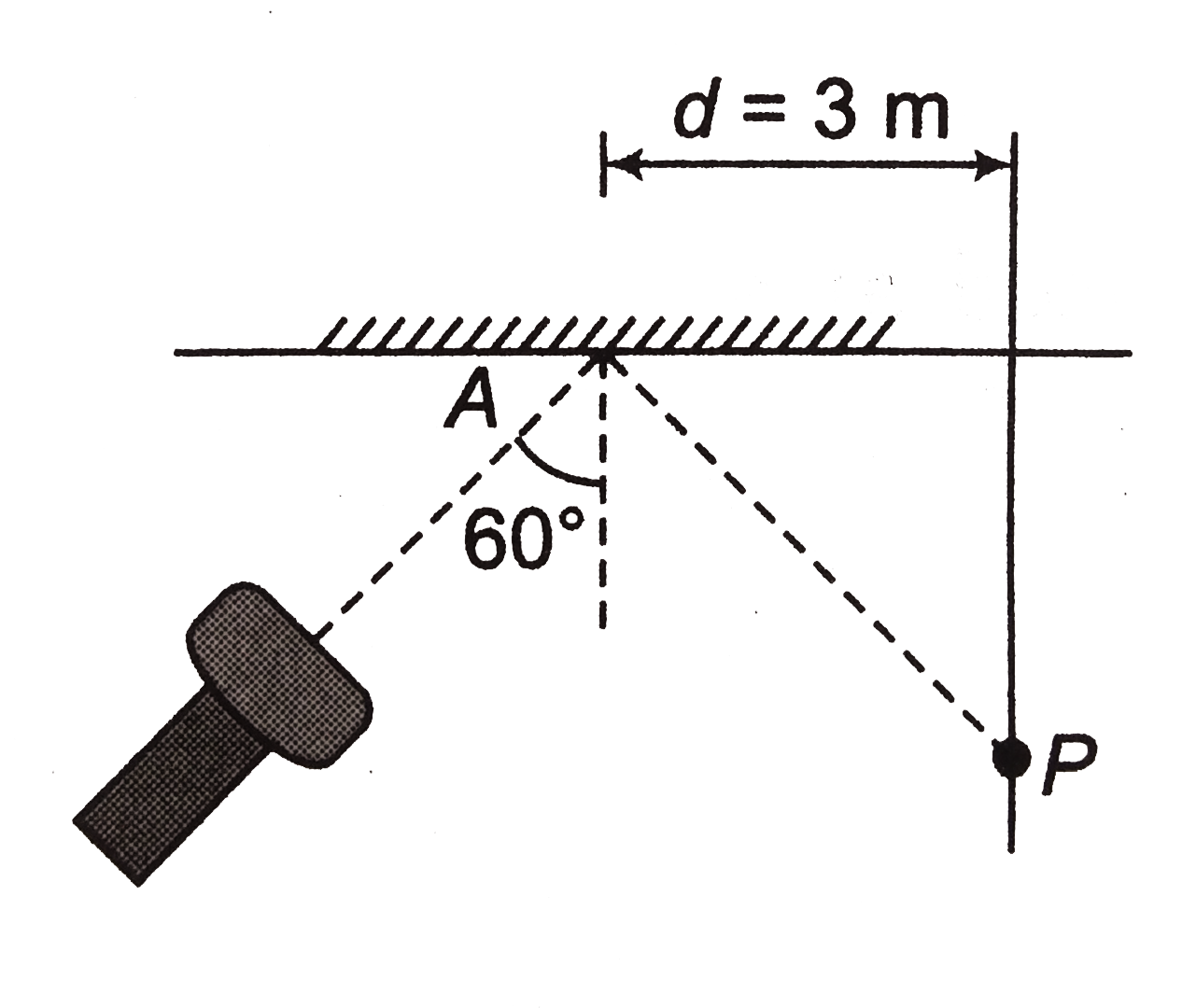 View Solution
View SolutionQuestion 75
A thief is running away in a car with velocity of 20m/s. A police jeep is following him, which is sighted by thief in his rear view mirror, which is a convex mirror of focal length 10 m. He observes that the image of jeep is moving towards him with a velocity of 1cm/s. if the magnification of mirror for the jeep at that time is 110. Find
(a) the actual speed of jeep,
(b) rate at which magnification is changing.
Assume the police's jeep is on the axis of the mirror.View SolutionQuestion 76
A ball swings back and forth in front of a concave mirror. The motion of the ball is described approximately by the equation x=fcos(ω)t, where f is the focal length of the mirror and x is measured along the axis of mirror. The origin is taken at the centre of curvature of the mirror.
(a) Derive an expression for the distance from the mirror of the image of the swinging ball.
(b) At what point does the ball appear to coincide with its image?
(c) What will be the lateral magnifiaction of the image of the ball at time t=T2, where T is time period of oscillation?
 View Solution
View Solution
All Exercises from DC PANDEY ENGLISH Class 12 PHYSICS REFLECTION OF LIGHT
- EXERCISE 30.1
- EXERCISE LEVEL 1 ASSERTION AND REASON
- EXERCISE LEVEL 1 OBJECTIVE
- EXERCISE LEVEL 1 SUBJECTIVE
- INTRODUCTORY EXERCISE
- LEVEL 2 COMPREHENSIVE BASED
- LEVEL 2 MORE THAN ONE CORRECT
- LEVEL 2 SINGLE CORRECT
- SUBJECTIVE
- EXAMPLE TYPE 1
- EXAMPLE TYPE 2
- EXAMPLE TYPE 3
- EXAMPLE TYPE 4
- EXAMPLE TYPE 5
- EXAMPLE TYPE 6
- EXAMPLE TYPE 7
- EXAMPLE TYPE 8
- EXAMPLE TYPE 9
- MISCELLANEOUSEXAMPLES
- TYPE-1
- TYPE-2
- TYPE-3



